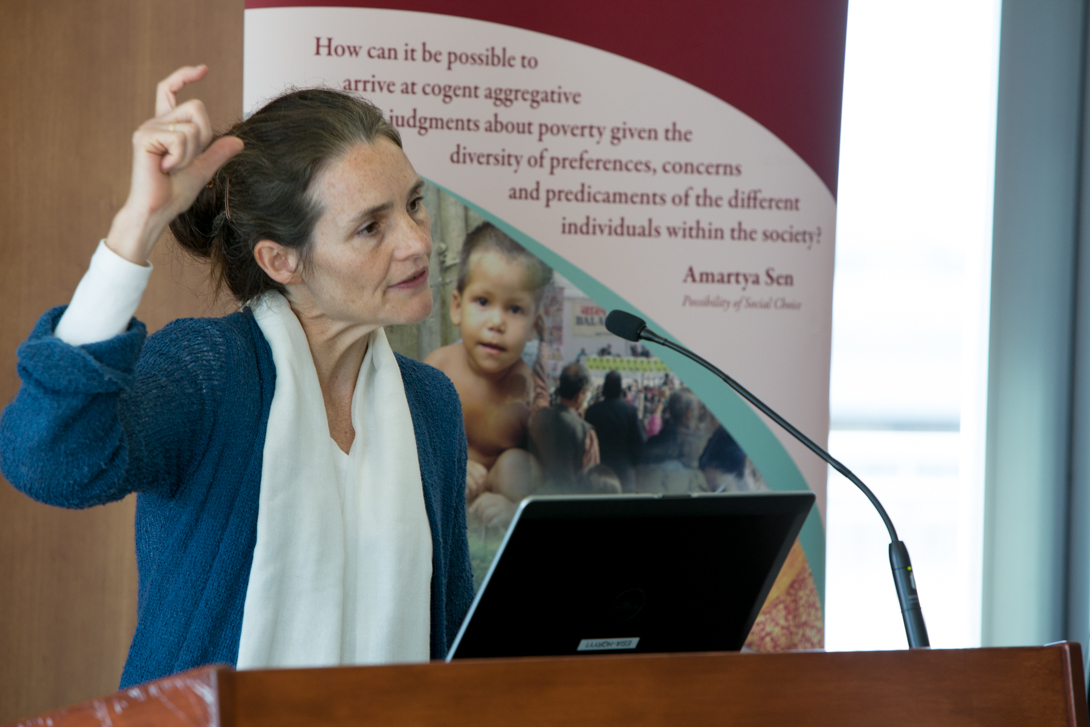By Ruth Steinhardt
Over half of people in 46 African countries analyzed in a recent study suffer from “multidimensional” poverty, the Oxford Poverty and Human Development Initiative announced Monday during the launch of the 2016 Global Multidimensional Poverty Index at the George Washington University’s Elliott School of International Affairs.
The Global MPI, which in 2016 analyzed more than 100 developing countries, measures deprivation from multiple perspectives. It uses 10 weighted indicators grouped into three dimensions—health, education and living standards—to identify specific, internationally comparable manifestations of poverty.
A household where any member is malnourished, for example, is deprived in nutrition, which falls under health. One without a phone, refrigerator or any means of transportation is deprived in asset ownership, which falls under living standards.
A person counts as “MPI poor” if deprived in more than a third of the index’s dimensions.
The country or region’s MPI Index is then calculated by multiplying the percentage of people identified as MPI poor by the average intensity of the poverty measured—that is, by the proportion of weighted indicators that people in that region are suffering at the same time.
The index is an alternative to income-only measurements like the World Bank’s global poverty line, which designates any household with an income of less than $1.90 per day as living in extreme poverty.
“You have to know what each household or individual member is facing in terms of deprivation [to calculate the MPI],” said James Foster, professor of economics and international affairs at GW and research fellow at OPHI, which developed the algorithm used to calculate the MPI.
“You can’t just [use] aggregate information. You have to know at the person level. Consequently, this indicator depends on and reveals something about the multiplicity of deprivations experienced by each person.”
The Global MPI should be “a tool to give governments more information on how to deal with all aspects of poverty,” said John Hammock, co-founder of OPHI and secretariat of the Multidimensional Poverty Peer Network.
Governments, he said, are using the data the index provides to shape their budgets and to provide targeted poverty relief going beyond cash transfers.
That could have powerful implications for poverty reduction.
A government may know from income-only studies, for instance, that its “poorest” regions are in the northeast and southwest. But if it also knows that populations in its northern regions tend to be deprived in terms of education, while those in its southern regions are deprived in terms of living standards, it can target resources accordingly.
Of the 35 African countries where OPHI monitored changes in multidimensional poverty over time, 30 were able to make significant reductions, researchers said.
OPHI Director Sabina Alkire, Oliver T. Carr Jr. Professor in International Affairs at the Elliott School, said the Global MPI is intended to supplement rather than supplant metrics like those used by the World Bank. Looking at the two indicators together, she said, can give researchers a more complicated but ultimately more useful picture of how to combat deprivation.
Rwanda, for example, was a poster child for MPI reduction. The country quickly and drastically lowered both the number of people living in MPI poverty and the intensity of that poverty.
However, the percentage of the Rwandan population living under the $1.90/day poverty line actually increased during the same period.
“The data are giving a varied story, and we have to look at them all together,” Dr. Alkire said. “No one measure will tell the story.”
After Dr. Foster and Dr. Alkire presented their findings, a panel of experts provided commentary and took questions from an audience that included representatives from several of the studied countries.
New tools like the Global MPI make this “an exciting time to work in international development,” said Linda Etim, assistant administrator for Africa at USAID.
“And finding measurable ways of holding ourselves accountable as a donor community is also very exciting,” she said.


